

Agriculture & Food Security Climate Resilience Work & Enterprise
This forestry project in Afghanistan is pushing women to the forefront of climate action
Zahra remembers what it was like to have predictable agricultural yields. The mother of six, who lives in Afghanistan’s Bamyan province, farms barley, potato and wheat alongside her husband in the country’s highlands.
For years, the couple’s harvest was sufficient to feed their family and earn an income as they sold the excess at a local market. But these days, the family is struggling, Zahra said, and it’s getting worse yearly.
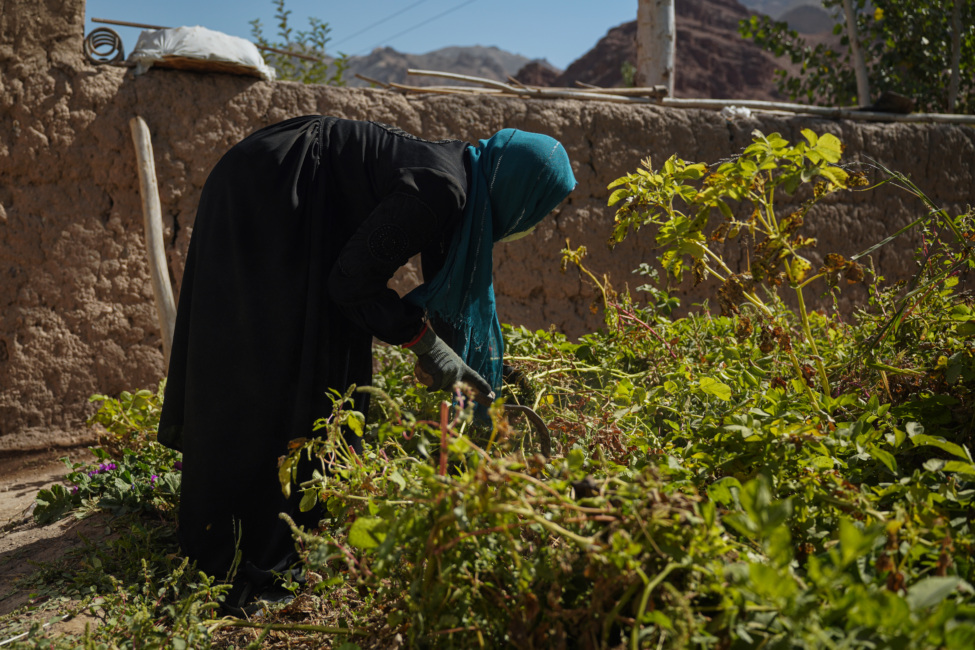
Zahra, whose microforest includes dozens of tree species, nuts, fruits and vegetables, is already reaping the benefits by harvesting French beans. She expects the harvest in the coming years to support her family’s food security.
Changes in the climate, including unpredictable rain and snow patterns, increasing temperatures and an ongoing drought, have drastically impacted farmers across Afghanistan like Zahra.
While the country is one of the lowest emitters of greenhouse gases in the world, Afghanistan ranks the eighth most vulnerable and least prepared country to adapt to climate change.
“In the spring, the water [rainfall] reduced and it was not enough to irrigate the potatoes, so it dried at the flowering stage,” Zahra explained. “If there was enough water, I would have gotten 25,000 kg of potato.”
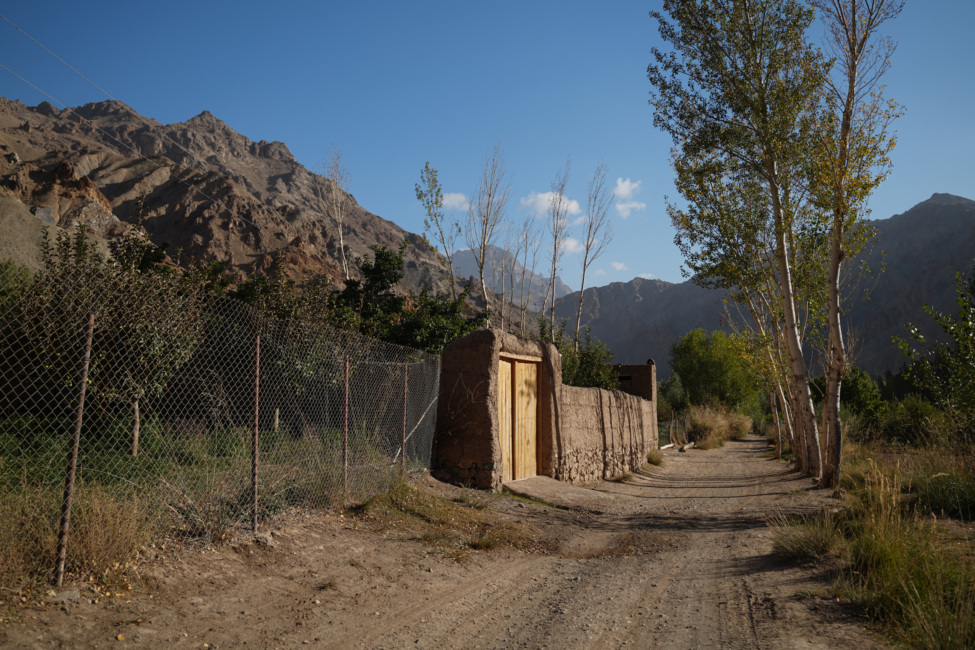
Zahra is one of the residents of Kafshandaz area, Shibar district, Bamyan province.
Instead, Zahra anticipates she will not harvest any potatoes or barley this year, putting her family at risk of hunger and drastically reducing their income as they can no longer sell produce at the market. Zahra, a homemaker, is also involved in animal husbandry, but the family struggles to make ends meet.
And they aren’t alone. Over 80 percent of Afghans rely on agriculture for their livelihoods, which is becoming increasingly difficult due to unpredictable weather patterns. As the country faces its third consecutive year of drought, half the population is experiencing acute hunger.
While most smallholder farming households raise livestock and grow traditional staples such as wheat, most cash incomes are generated by higher-value fruits, nuts and vegetables. With this in mind, Zahra is participating in a community forestry initiative, supporting her in growing more profitable produce and becoming climate resilient.

80% of people in Afghanistan rely on agriculture for their livelihoods.
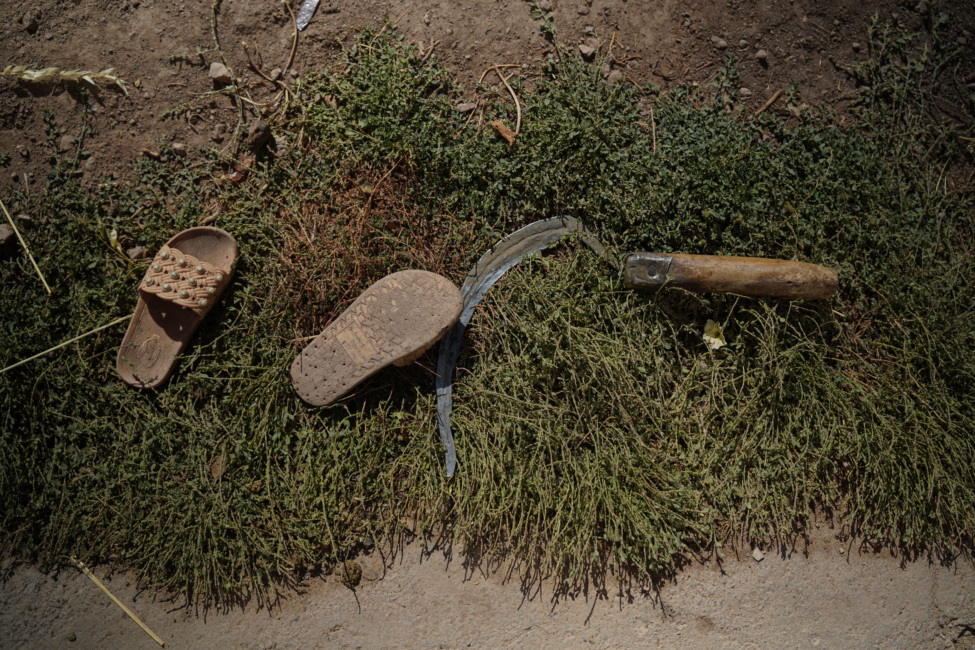
Zahra anticipates that she’ll not be able to harvest any potatoes or barley this year, greatly reducing her family’s income.
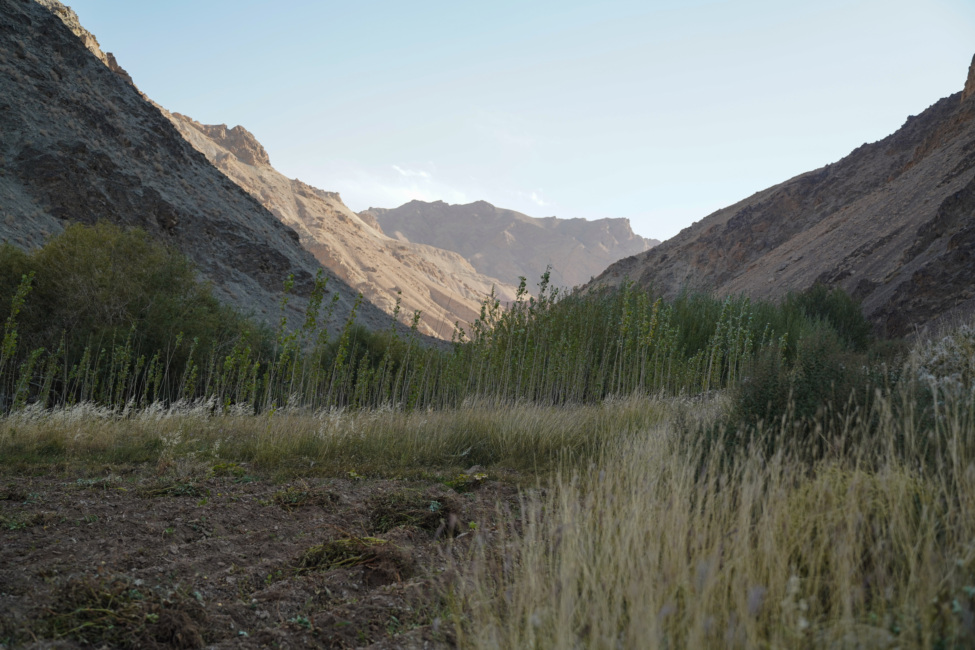
Faced with uncertainty about their futures, the women in Zahra’s community began a dialogue with AKF to seek solutions, exploring the possibility of developing microforests.
/2
Leveraging microforests for climate resilience
Previously, Zahra and other women in her community participated in women’s groups and councils supported by the Aga Khan Foundation (AKF). These groups involved income-generating activities such as managing greenhouses and processing food. But suddenly, everything came to a stop due to the political situation in Afghanistan.
As the women faced uncertainty about their future, they began a dialogue with AKF to seek solutions, exploring the possibility of developing microforests in their communities. The Aga Khan Development Network’s climate resilience projects include GROW – The Microforest Initiative, which grows microforests as a nature-based solution to support communities in combating climate change while supporting them in earning livelihoods.
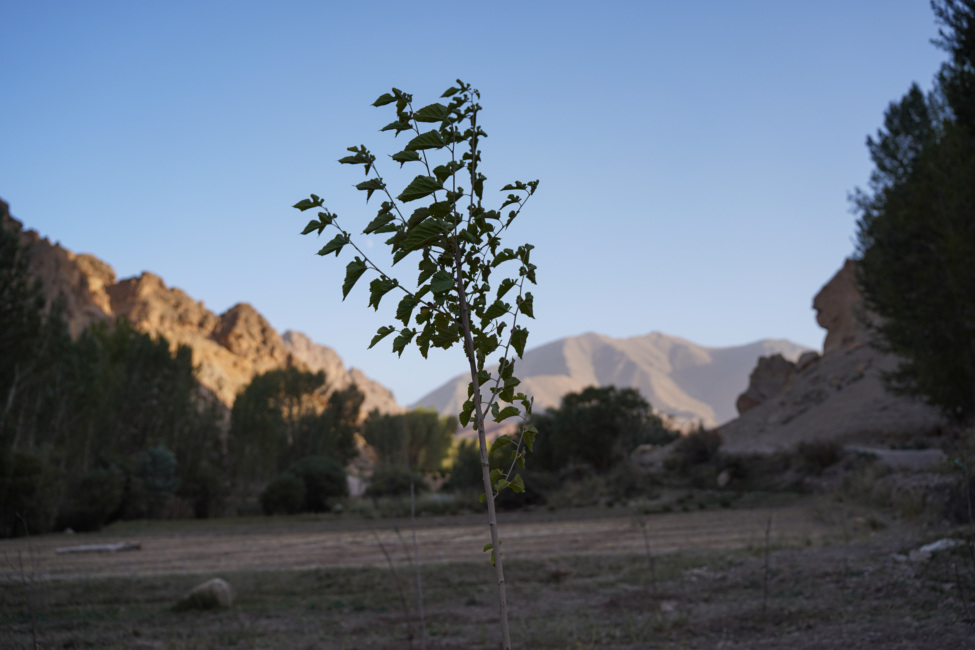
The GROW initiative in Afghanistan has taken microforests to high-altitude mountains, where they can provide food, fodder and medicinal plants to help farmers earn an income despite the rapidly worsening reality of climate change threatening traditional agricultural production.
Inspired by the Miyawaki method, which was developed by Japanese botanist Akira Miyawaki, GROW microforests are small, dense, highly biodiverse forests that prioritise indigenous and endemic species and grow at a faster rate than other forest plantations. GROW microforests foster climate resilience by sequestering carbon, changing the microclimate of an area and creating a habitat for wildlife.
They also stimulate biodiversity by regenerating the air, water and soil, and provide food, fodder and medicinal plants, which helps community members earn an income despite the rapidly worsening reality of climate change threatening traditional agricultural production. In countries experiencing drought, such as Afghanistan, microforests create microclimates that contrast with the climate outside due to the presence of trees and shrubs.
Since 2017, AKF has worked with communities in 11 countries, mainly in Asia and Africa, to plant more than 1,300 GROW microforests comprising more than 526,000 trees, on private and community-owned land, including schools and office grounds.
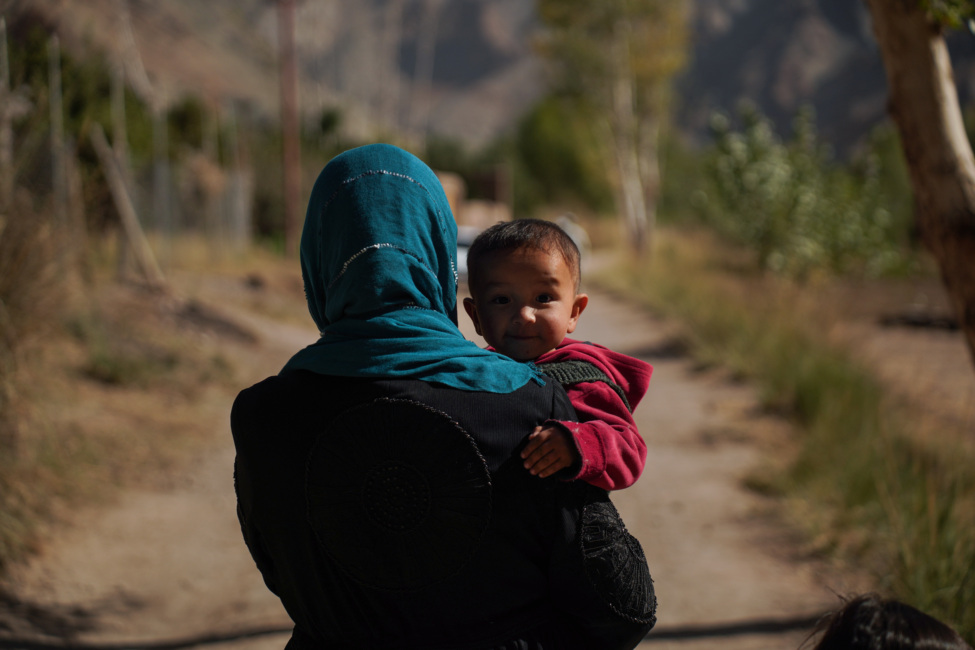
Through this initiative, women farmers like Zahra are able to diversify their livelihoods and cope better with climate change.
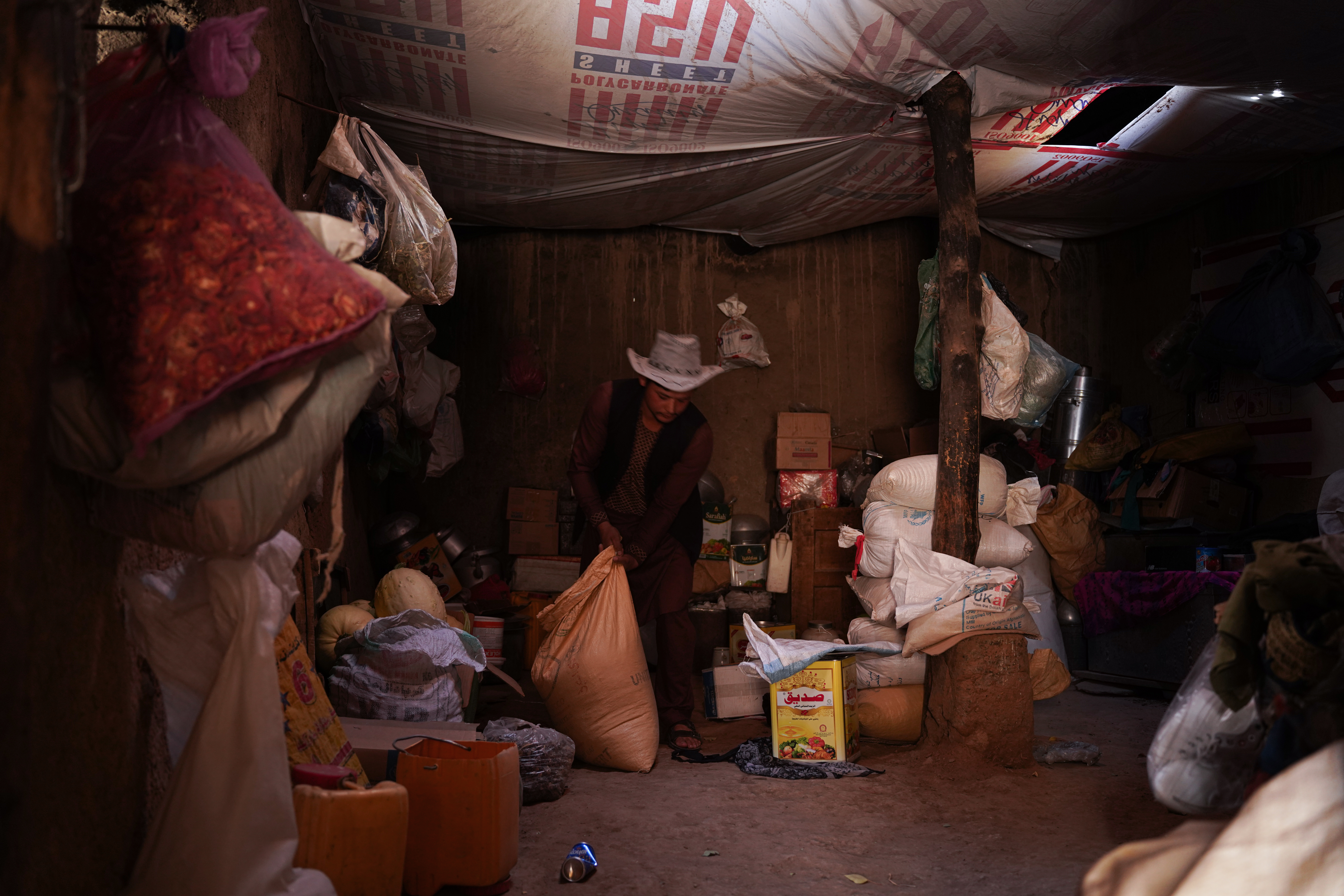
Over 59% of the total population is facing acute food insecurity.
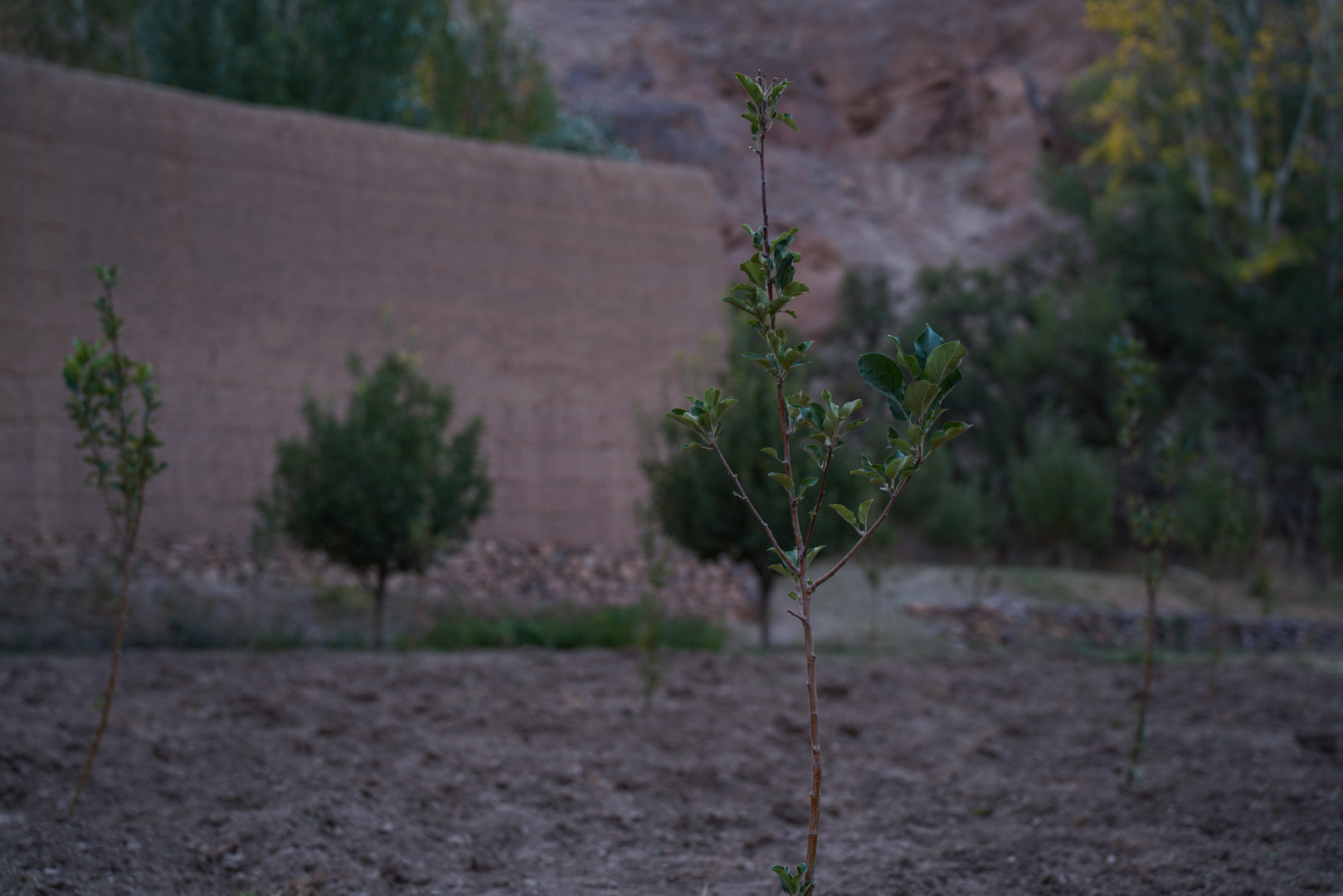
The saplings given to Amina by the AKF project include mulberry, apple, plum, apricot, plantain, and photography tree seedlings.
A women-led family initiative
To adapt the project to the country’s context, a team of women at AKF in Afghanistan trained women from participating communities. Zahra was introduced to GROW microforests and learned how planting trees was considered an act of charity in Islam.
Zahra began spending time on the land designated for the microforest, learning practical skills by starting a small nursery, developing the microforest layout, preparing the soil and the land, and planting and maintaining the trees, all of which would support her in managing her own microforest with other women in the coming years.
Within months, the project developed into a family initiative. AKF began training the women’s husbands on managing GROW microforests so they, too, could participate.
While the men – including Zahra’s husbands and sons – took on tasks such as digging and transporting saplings, the women focused on cultivating saplings and assessing plants needing fertiliser or water.
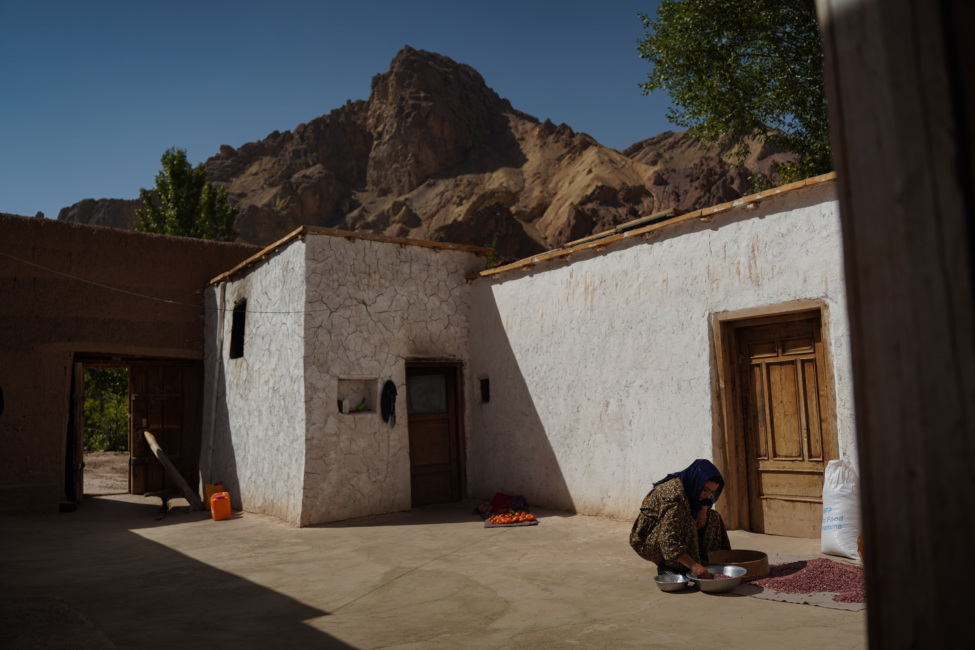
While the microforests provide environmental and economic benefits, many involved in the project said it also has ripple effects, particularly for women.
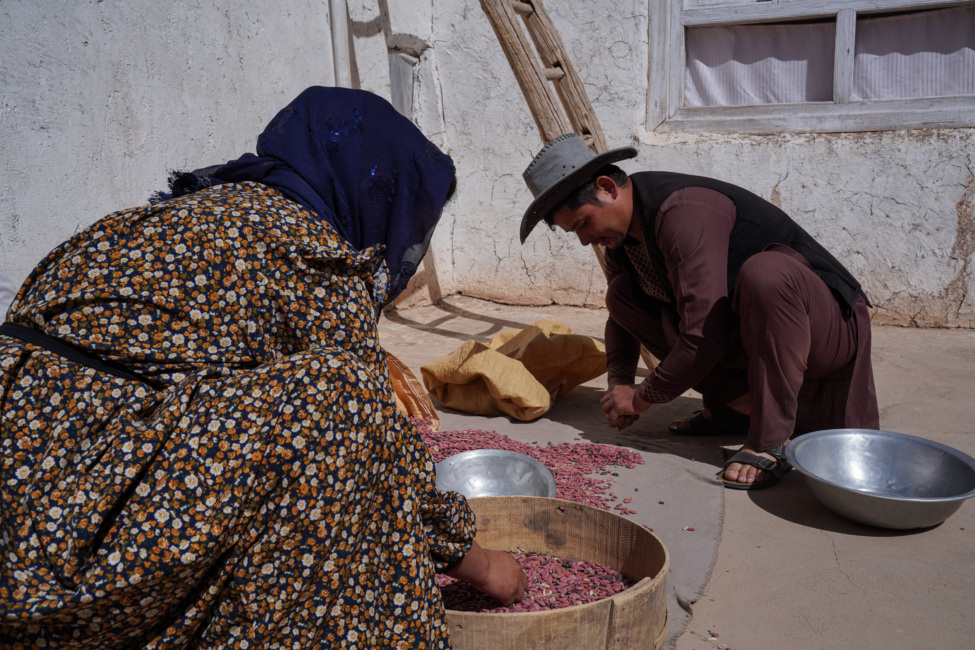
Men in the community have taken on tasks such as digging and transporting saplings, to assist the women and their work.
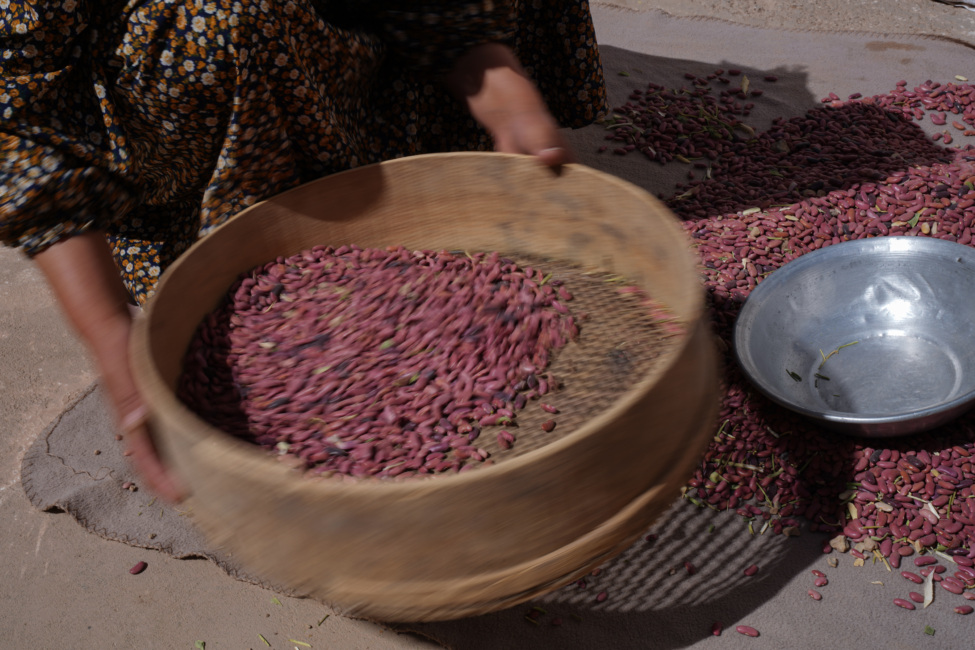
Amina expects the fruits and nuts to grow in their microforest in the coming years, increasing her family’s income and strengthening their climate resilience.
/3
Together with her neighbour Amina, Zahra planted various trees and plants in their microforest, including fruit and non-fruit species such as beans, pears, walnuts, mulberries, peaches and cherries, which on average, have a tree survival rate of 91 percent.
“This is the first time we grew beans and trees in the same land,” Zahra said, describing the intercropping method she learned about that would allow her to reap immediate benefits from plants growing on the microforest floor while the newly planted trees are still small and young.
And it has been a success. To date, she has harvested 70 kg of beans – keeping half to feed her family, which helps her save money, and selling the other half in a local market at approximately $1 per kg. Both women have also harvested strawberries from the microforests, which have been selling well locally.
If we didn’t have this project, we don’t know what we would do.Amina, microforest farmer, Bamyan Province
Amina, excited by the positive environmental impact their microforest will have, said she has had to explain this to other community members to get them on board.
“It’s the first time we have done this here and usually, when you do something new, it takes time to explain the benefit to the community,” she said. “Now the community is very interested in this activity [microforestry] so it will help work against climate change as well.”
Both women expect the other fruits and nuts to grow in their microforest in the coming years, increasing their family’s income and strengthening their climate resilience.
Zahra, who was unable to continue her studies after the third grade and has minimum literacy skills, plans to use the increase in income to send her children to school.
“I hope the situation will get better and my daughters can go to school and get a good education so it can change their lives,” she said. “If one woman is educated, it can change the family.”
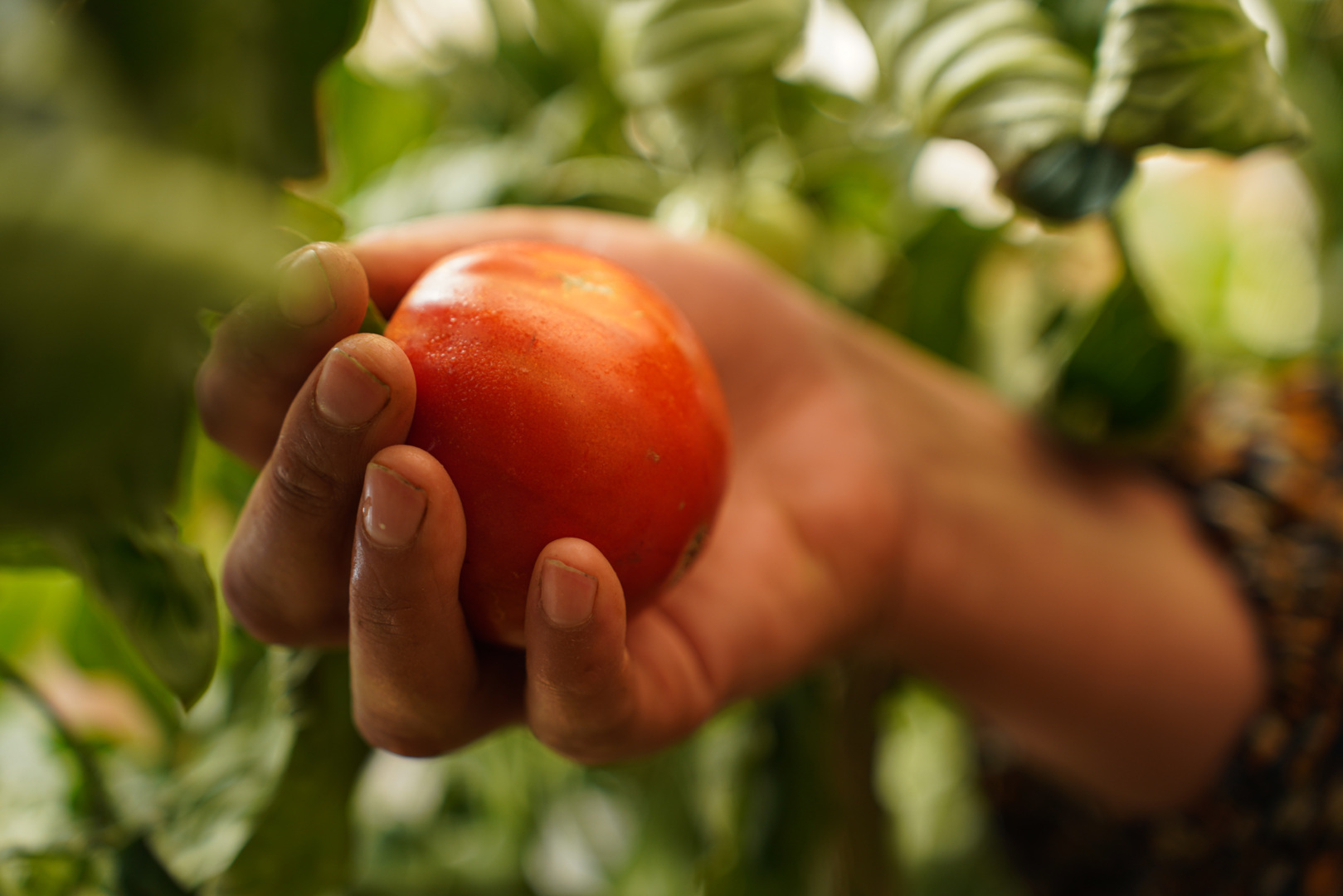
Strengthening women’s economic engagement through microforests
While the microforests provide environmental and economic benefits, many involved in the project said it also has ripple effects, particularly for women.
“We are very happy,” said Amina, who completed high school with a diploma in mathematics and dreamt for years of studying to become a teacher but can no longer do so. “If we didn’t have this project, we don’t know what we would do. We would just sit at home without work or school.”
“Because of the current situation in Afghanistan, we have no opportunities for females,” she said. “This [microforest] project keeps us busy and it’s a big benefit for us.”
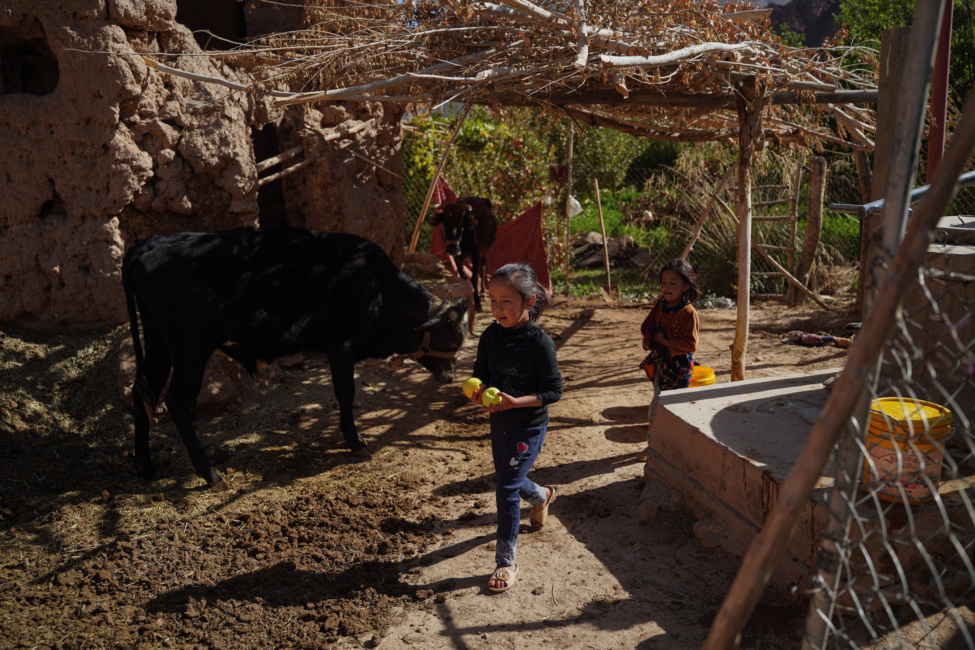
Caring for their microforest keeps Zahra and her family (her children pictured here) busy and improves their income.
Parisa from AKF in the Baghlan region explained that caring for the microforests has kept women busy, supporting their psychological well-being during particularly challenging sociopolitical circumstances:
“Afghan women are always worried about unemployment and economic problems – but microforests help them.”
The project has also helped reframe the role of women. Their engagement in microforestry directly supports their family’s food security and incomes, showing others that women can “do more than laundry or cooking,” explained Parisa.
“Women… must participate in decision-making at home. They must solve their economic problems and help [manage] the finances with their husband and brothers,” she said. “Microforests open this window for women.”
Pseudonyms have been used to protect the identity of the women interviewed in this article.
Learn more about GROW: The Microforest Initiative.
Words by Jacky Habib, photos by Ali Omid Taqdisyan.
Jacky Habib is a Nairobi-based freelance journalist reporting about social justice, gender, and humanitarian issues. Her work has been published by NPR, Al Jazeera, VICE, Toronto Star, and others. Read more at www.jackyhabib.com.
Related News & Stories


BBC StoryWorks produces new film for AKF, exploring women-led mangrove restoration in Mozambique

5 ways AKF is restoring land, combatting desertification, and building drought resilience across mountains, plains and coasts
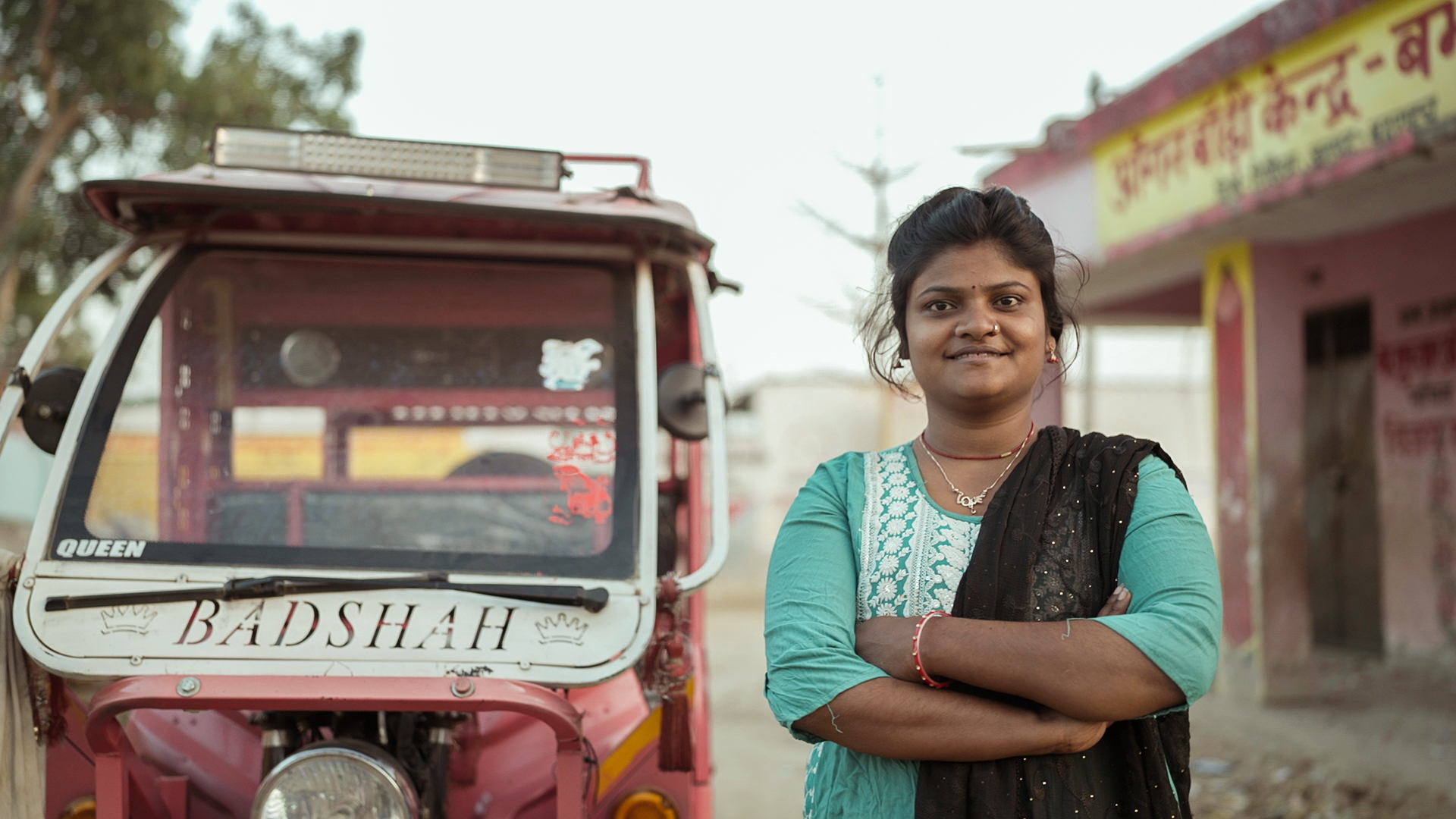
Prince’s Trust Awards: E-rickshaw driver Arti receives the Amal Clooney Women’s Empowerment Award

“I have finally found a way to financially support my family”: Breaking the cycle of poverty in rural Afghanistan

Impact Odyssey 2.0: The Businesses of Tomorrow

Support our work Your donations are helping us build a future where we all thrive together.